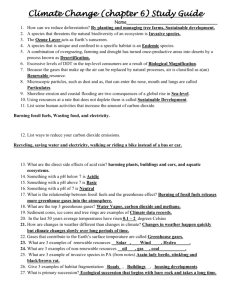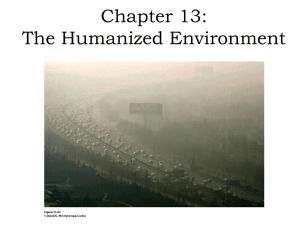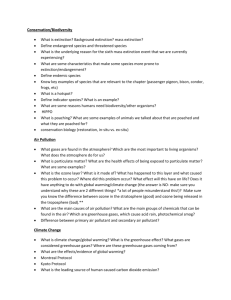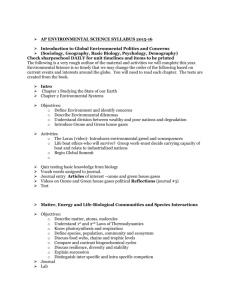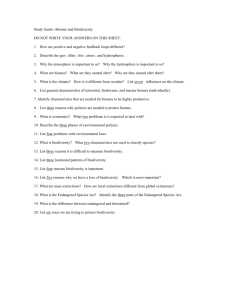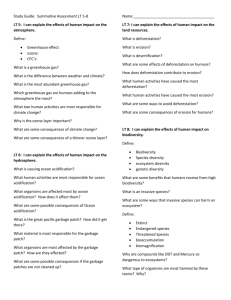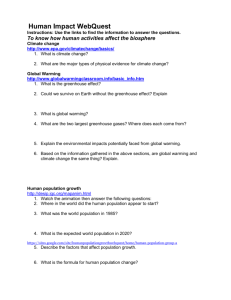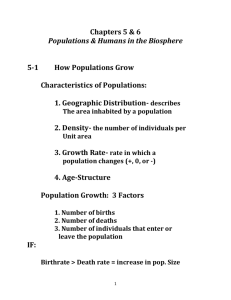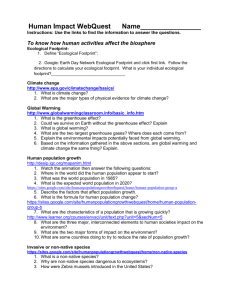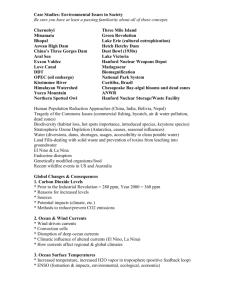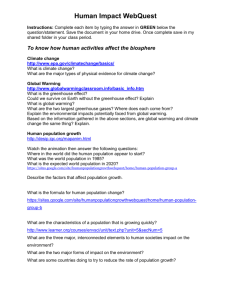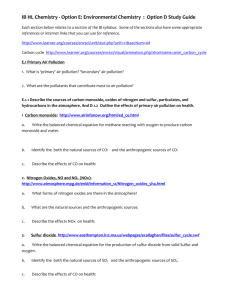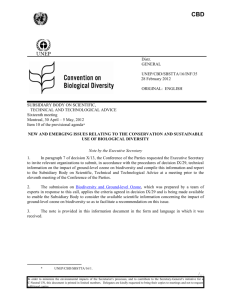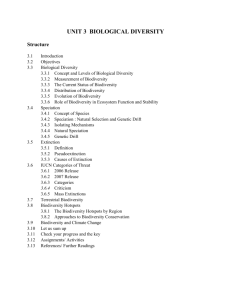Unit 6 – Periodic Table – Test Study Guide
advertisement
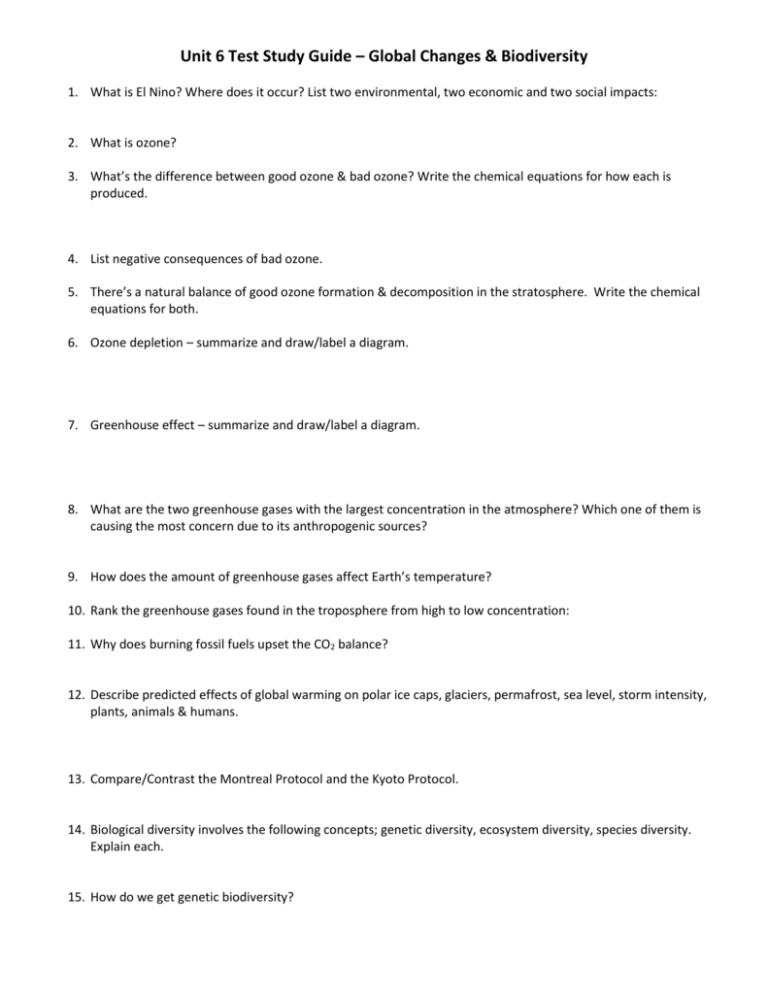
Unit 6 Test Study Guide – Global Changes & Biodiversity 1. What is El Nino? Where does it occur? List two environmental, two economic and two social impacts: 2. What is ozone? 3. What’s the difference between good ozone & bad ozone? Write the chemical equations for how each is produced. 4. List negative consequences of bad ozone. 5. There’s a natural balance of good ozone formation & decomposition in the stratosphere. Write the chemical equations for both. 6. Ozone depletion – summarize and draw/label a diagram. 7. Greenhouse effect – summarize and draw/label a diagram. 8. What are the two greenhouse gases with the largest concentration in the atmosphere? Which one of them is causing the most concern due to its anthropogenic sources? 9. How does the amount of greenhouse gases affect Earth’s temperature? 10. Rank the greenhouse gases found in the troposphere from high to low concentration: 11. Why does burning fossil fuels upset the CO2 balance? 12. Describe predicted effects of global warming on polar ice caps, glaciers, permafrost, sea level, storm intensity, plants, animals & humans. 13. Compare/Contrast the Montreal Protocol and the Kyoto Protocol. 14. Biological diversity involves the following concepts; genetic diversity, ecosystem diversity, species diversity. Explain each. 15. How do we get genetic biodiversity? 16. What is biological evolution by natural selection, and how can it account for the current diversity of organisms on the earth? 17. How can geologic processes, climate change and catastrophes affect biological evolution? 18. Differentiate between species evenness and species richness. How are these concepts related to biodiversity? 19. Describe what a “hot spot” is and list three hot spot locations. 20. Summarize some of the ways we benefit from biodiversity. 21. Biodiversity provides ecosystem services. What are ecosystem services? Give examples of 3. 22. What is the only reason why things are becoming extinct at such a fast rate? 23. Characterize the threats to biodiversity – Give examples. H I P P O 24. Define endangered, threatened, and vulnerable species. 25. Summarize the conservation efforts and laws to save endangered species, evaluate endangered species management. 26. Define keystone, indicator and flagship species and give examples of each. 27. Describe the benefits of zoos. 28. What’s the difference between in situ and ex situ conservation?
